Looking to take up a new hobby that is both fun and rewarding? If so, sewing may be for you. With our ‘beginners guide to sewing’ series we will cover a range of topics to help you get started. We recommend that you first begin by reading ‘
beginners guide to sewing –equipment’, in that article we go through all the basic tools and equipment needed for most sewing projects.
In this article we will cover sewing patterns and fabrics. We will first explain what a sewing pattern is and why they’re a great place to start if you are a beginner. We will then take a look at the different types of fabric available and guide you on choosing the best fabric for your project.
Choosing a Sewing Pattern
What is a sewing pattern?
Sewing patterns are simply guides which are followed in order to create garments and textiles. Sewing patterns can either be bought readymade or drawn by hand. If you are a beginner, we recommend you follow a commercial sewing pattern before attempting to create your own.
A typical, traditional sewing patternwill be sold in an A4 envelope style packet. On the front of the packet there will be an image of the finished garment. Inside the packet you will find an instructions leaflet and sheet of tissue paper. The tissue paper will have printed on it all the pattern pieces needed to make your garment. Usually a typical sewing pattern will contain two or more garment designs, so you will need to check to the instructions to find out which pattern pieces are required for your chosen design. Pattern pieces require cutting out by hand and are then used as a template for cutting fabric.
Some patterns can be downloaded as PDFs and printed out at home. However, this isn’t recommended for beginners as the pattern pieces must be printed out at the correct size which can be difficult to do on a standard home printer.
In our next article of the series, we will guide you on following a sewing pattern.
An example of a sewing pattern 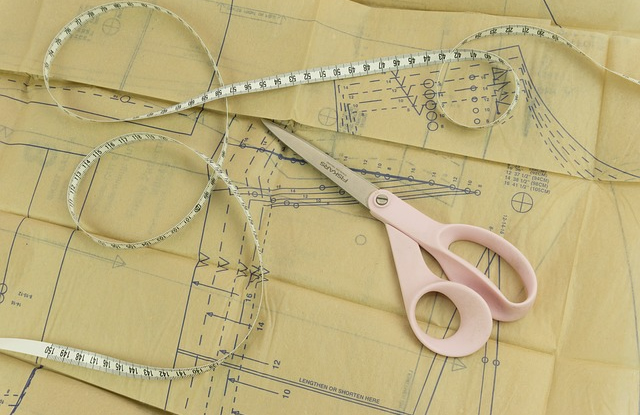
What patterns should I avoid as a beginner?
There are thousands of sewing patterns to choose from, ranging from very simple to very complex. The more detailed a garment is, the more complex the sewing pattern will be. When choosing a pattern as a beginner it’s best to avoid patterns containing, pleats, frills and bows unless you like a challenge. Certain fastenings such as concealed zips can also be awkward and require a little more experience. You may also want to check if a pattern contains a lot of darts. Darts are special folds sewn into fabric to give a garment movement and shape, but can be difficult to sew as a beginner. If you’re not sure if a pattern contains a lot of darts, ask the pattern retailer who should be happy to help.
Examples of Advanced Sewing Patterns
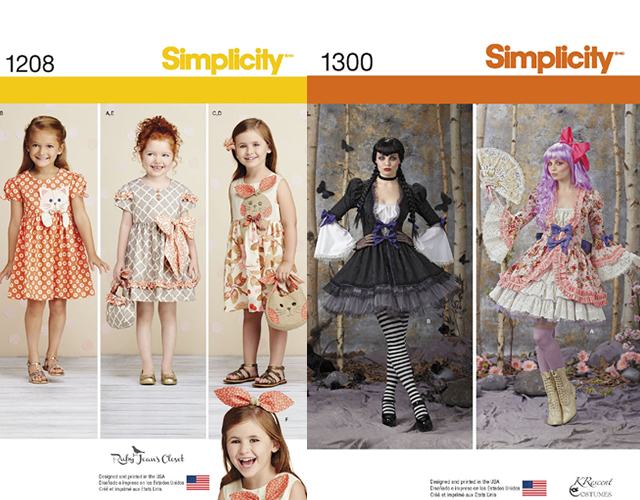
What patterns are best for a beginner?
There are many patterns suitable for beginners. Pillowcases, cushion covers, duvet covers and blankets are all generally safe options. As you develop your sewing skills these types of patterns can also be easily modified to include more interesting design elements, such as fringing, trims and piping. If you’re looking to make something wearable try to search for patterns with a simple silhouette. Pencil and a line skirts, t shirts and aprons are all fantastic projects for beginners to try.
Examples of easy sewing patterns, suitable for beginners
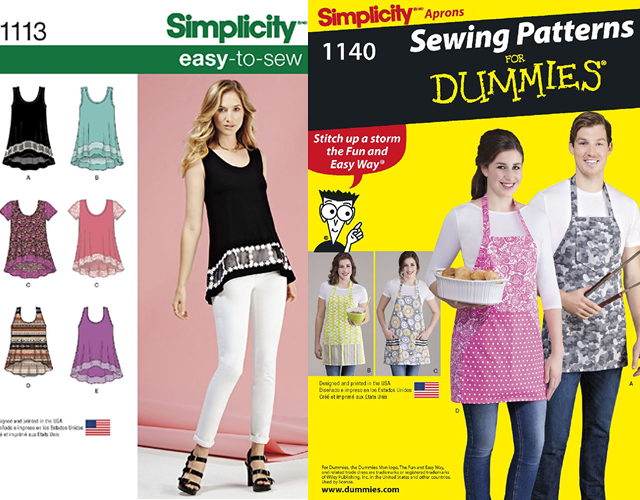
How to choose a fabric
What fabrics should I avoid as a Beginner?
Some fabrics are much more difficult to work with than others and as a beginner you’ll want to opt for a fabric which is easy to sew and cut. Stretchy fabrics such as
lycra,
scuba and
neoprene can be difficult to control as you sew and cut them, so we recommend avoiding these for now. Fabrics which are too thick or too thin should also be avoided. Thick fabrics like
velvet,
tapestry and denim have little give and would be fairly challenging to manipulate into certain shape. Thin fabrics like
chiffon,
georgette and
crepe can be easily torn and frayed.
When it comes to choosing a fabric design, we recommend avoiding prints which will require matching up again once cut. For example checks and stripes will need to be lined up properly when sewing two pieces together, otherwise they will become an eyesore within your finished garment and cheapen its look. Patterns which are more detailed are less noticeable when not lined up exactly. You can see examples of this below.
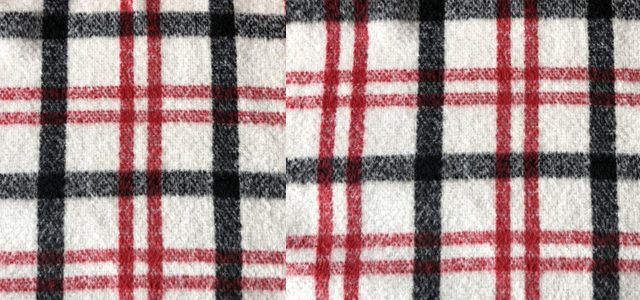
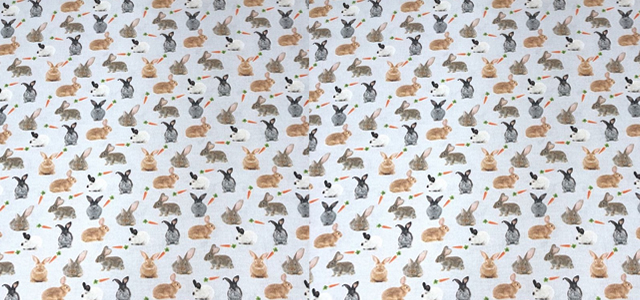
What fabrics are best for a beginner?
Before attempting to follow your pattern with a fabric you love, we recommend trying it with a practice fabric first.
Calico is an excellent practice fabric. It is inexpensive and just the right texture and thickness for someone who is new to sewing. Once you feel you are ready to move on, we recommend a
cotton or
polycotton. Our cotton and
cotton blend ranges include hundreds of stylish patterns to suit every taste and project.










